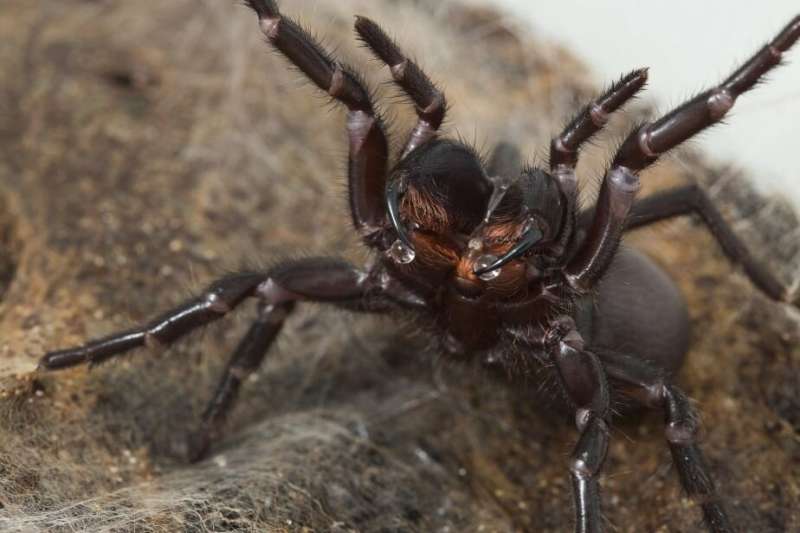This article has been reviewed according to Science X's editorial process and policies. Editors have highlighted the following attributes while ensuring the content's credibility:
fact-checked
peer-reviewed publication
trusted source
proofread
Funnel-web spider venom varies depending on circumstances, shows study

Scientists studying the most venomous spider in the world have found the venom of some varies depending on circumstances—which could provide insights into how they could be of use for human health.
Dr. Linda Hernández Duran from James Cook University's Australian Institute of Tropical Health and Medicine led a study that examined the venom produced by different species of funnel-web under different conditions. The study is published in the journal PLOS ONE.
She said funnel-webs are the most venomous spiders in the world. "Funnel-webs have the most complex venoms in the natural world, and they are valued for the therapeutics and natural bioinsecticides that are potentially hidden in their venom molecules. Knowing more about how they are produced is a step towards unlocking this potential," said Dr. Hernández Duran.
The team collected four different species of funnel-web—the Border Ranges (Hadronyche valida), Darling Downs, (Hadronyche infensa), Southern tree-dwelling (Hadronyche cerberea) and Sydney funnel-web (Atrax robustus)—and subjected them to different tests, such as being prodded with tweezers and puffed with air.
"We mapped their behavior and measured their heart rate with a laser monitor to establish a proxy value for their metabolic rate. We then collected their venom and analyzed it with a mass spectrometer," said Dr. Hernández Duran.
She said researchers found that certain spiders had variations in their venom based on different factors such as defensiveness and heart rate.
"With the Border Ranges funnel-web, the expression of some venom components was associated with heart rate and defensiveness. The other species didn't demonstrate this, suggesting that particular associations may be species-specific," said Dr. Hernández Duran.
She said the use of venom and the display of aggressive behaviors by spiders have metabolic costs.
"As a result, spiders might use different behavioral strategies to compensate for these costs. Our results suggest spiders might increase their metabolic rate when they use venoms, and reduce their movement when facing a threat," said Dr. Hernández Duran.
She said the findings highlight the link between behavior, physiology, and venom composition in funnel-webs.
"We showed for the first time how specific venom components are associated with particular behavioral and physiological variables and demonstrated that these relationships are context-dependent. We gained some valuable insights for further exploration and understanding of the ecological role of venom."
More information: Linda Hernández Duran et al, Interactions between physiology and behaviour provide insights into the ecological role of venom in Australian funnel-web spiders: Interspecies comparison, PLOS ONE (2023). DOI: 10.1371/journal.pone.0285866
Journal information: PLoS ONE
Provided by James Cook University


















